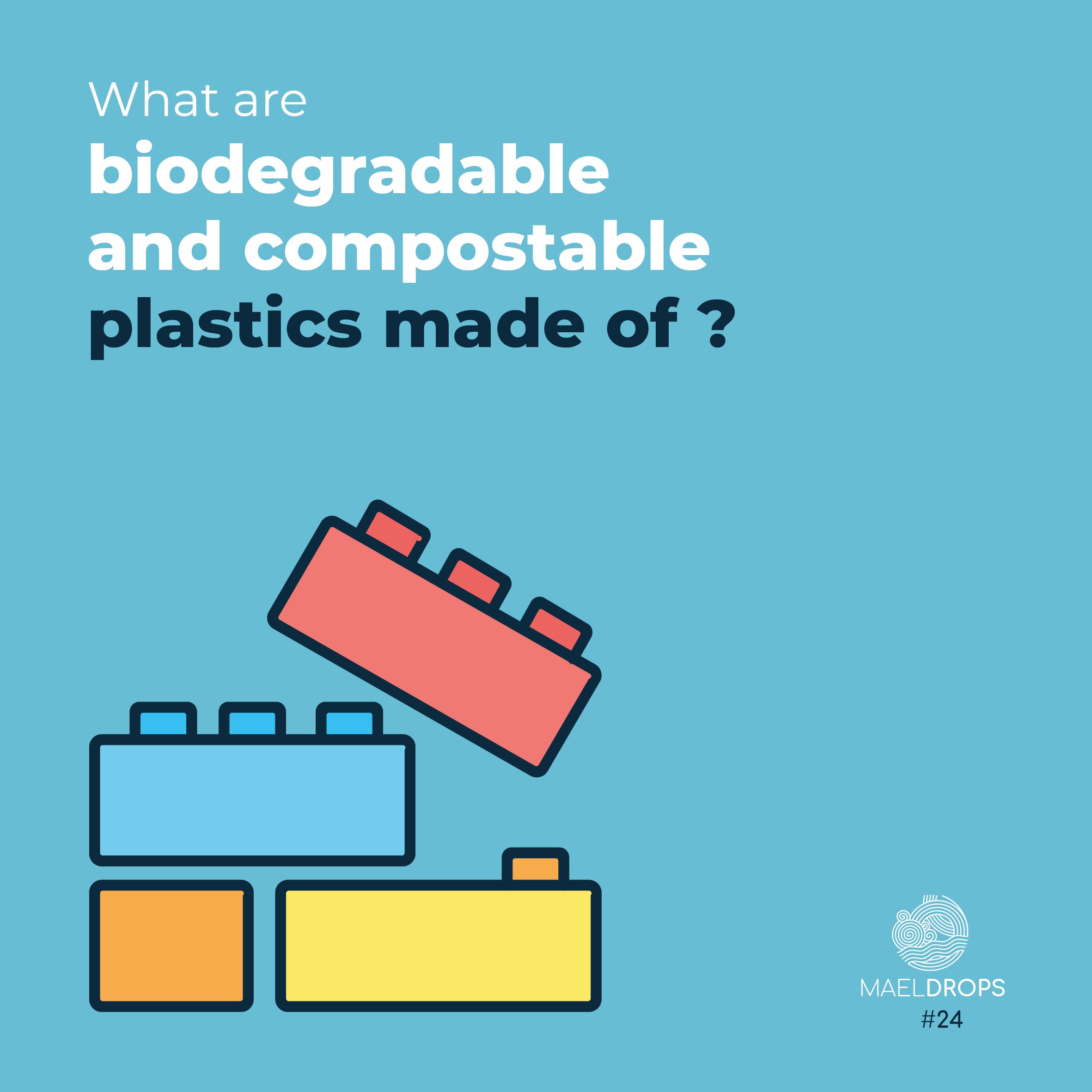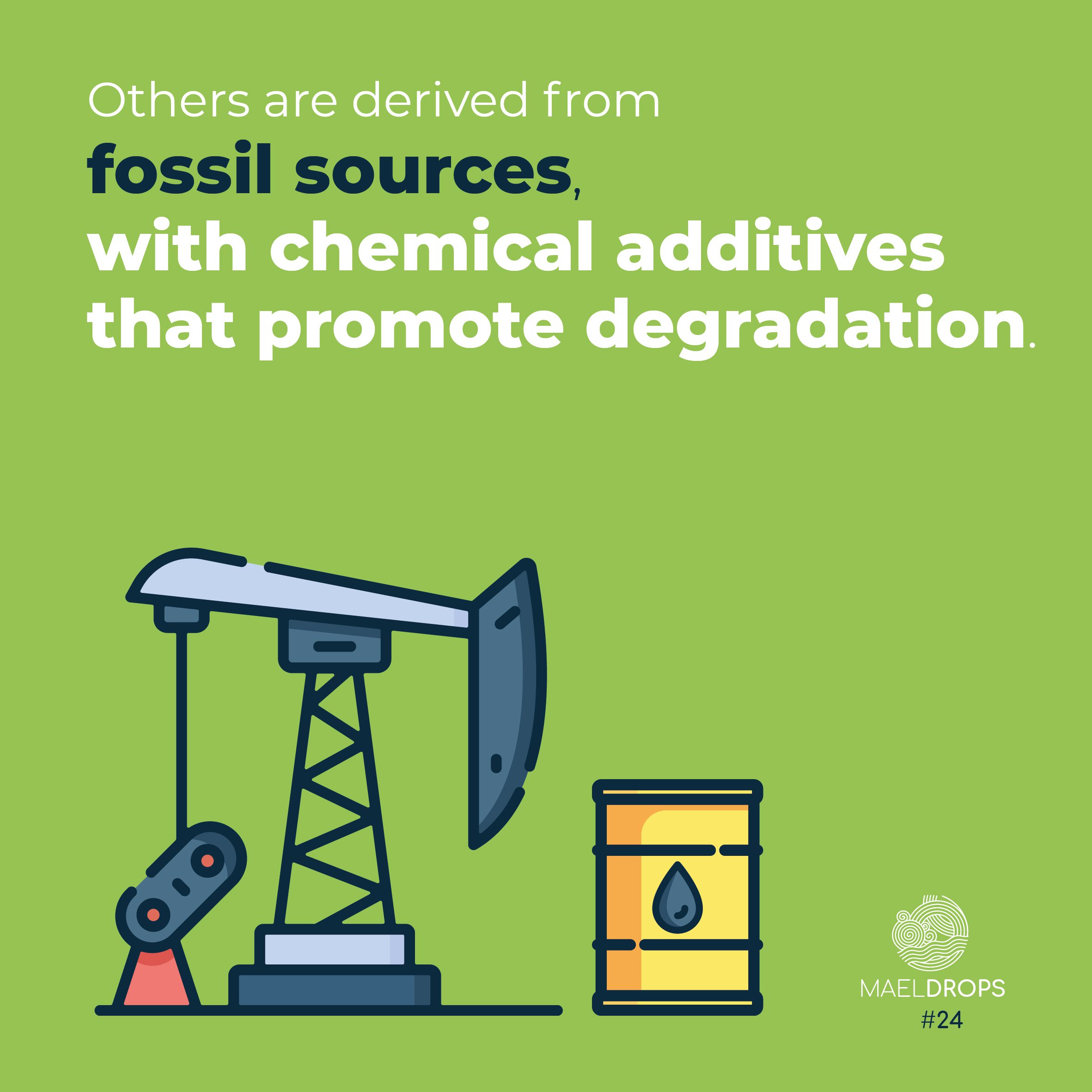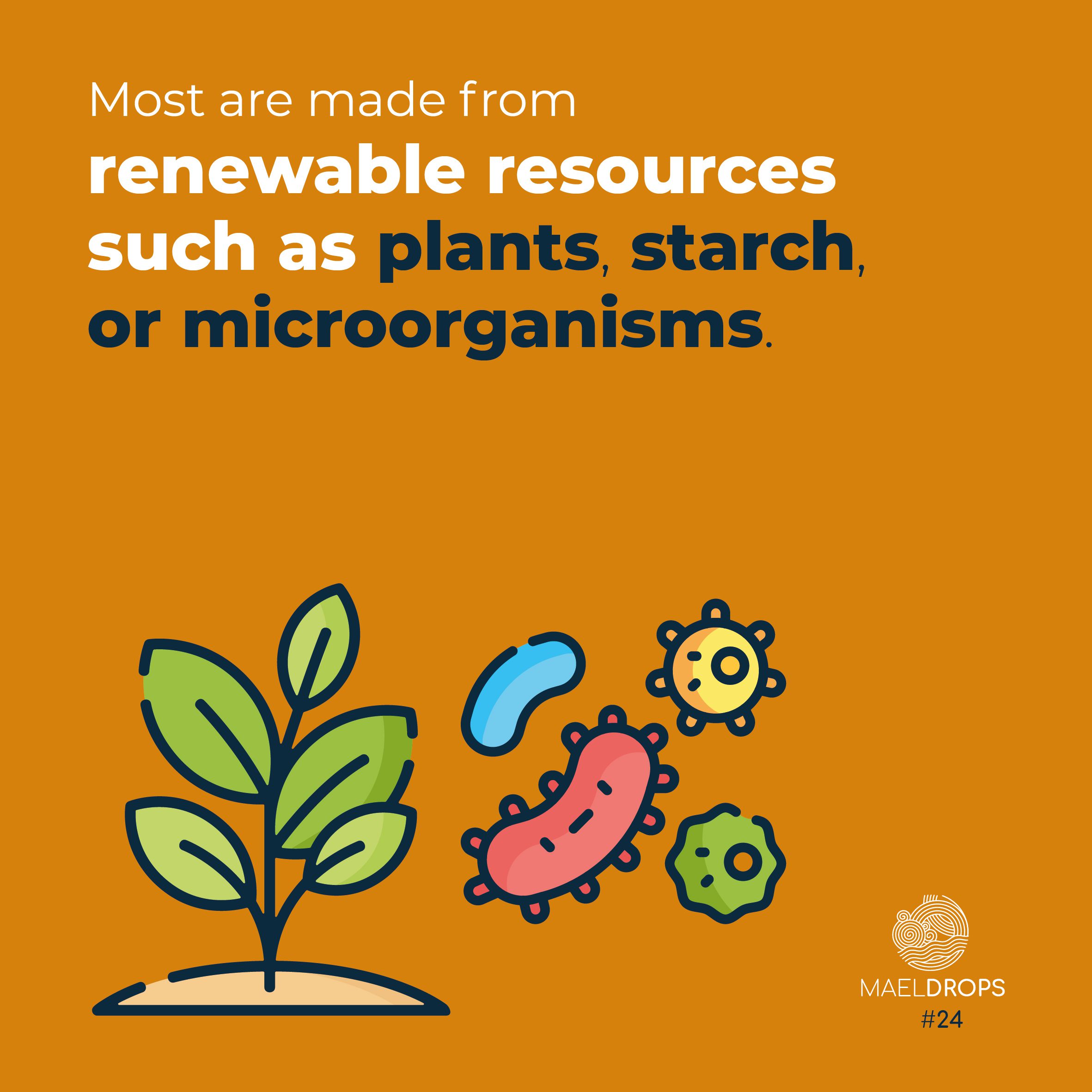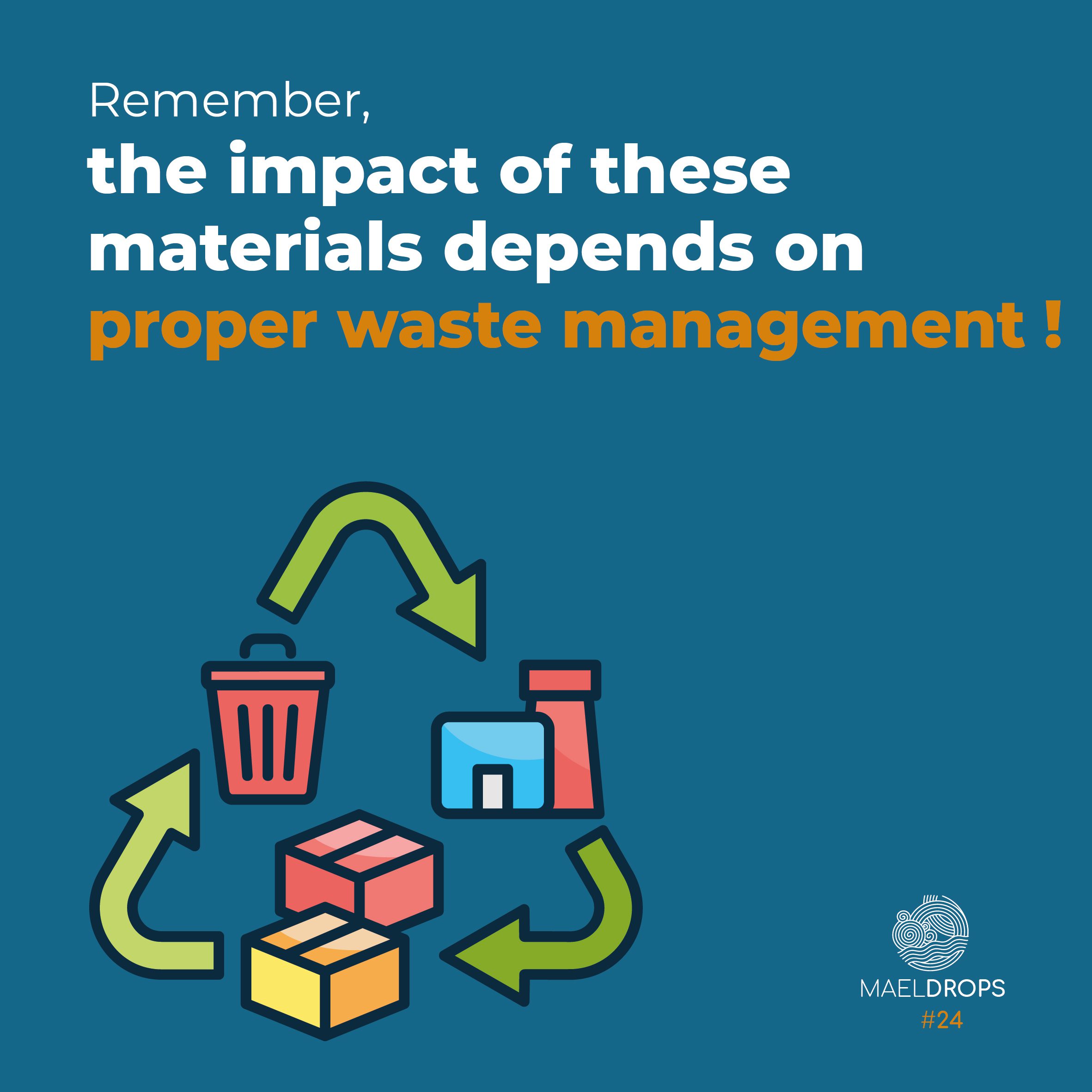MAELDrop #24 | Bioplastics, biodegradable and compostable plastics: second episode
Some time ago, we discussed biodegradable and compostable plastics, highlighting the challenges they present – even though they are often viewed as a more sustainable alternative to traditional plastics. Today, we want to explore how these materials are made.
Biodegradable and compostable plastics are usually made from renewable biological resources. One of the most commonly used materials is polylactic acid (PLA), derived from the starch of fermented plants (such as corn or sugarcane). Another common example is polyhydroxyalkanoates (PHA), which are produced by certain bacteria during the fermentation. Starch blends, combining natural starch with plasticizers, are also used to create biodegradable plastics, often found in compostable bags or packaging films.
However, not all biodegradable plastics are necessarily biobased: some are fossil-based and created by adding chemical additives that promote degradation. An example of this is polycaprolactone (PCL), a synthetic polyester that is biodegradable and used in medical and industrial applications.



